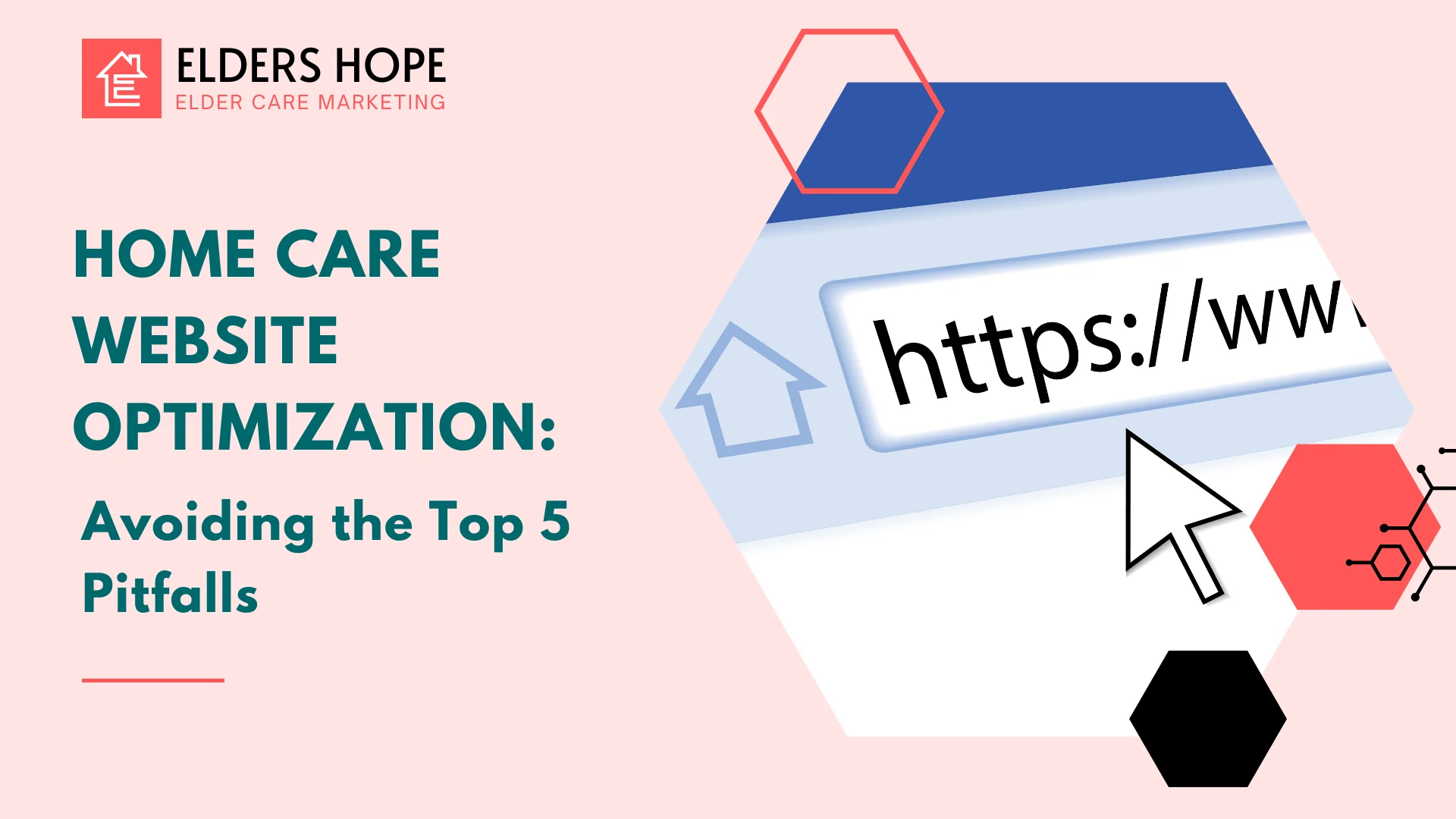Get your healthcare website



In today’s digital age, having a well-crafted homecare website is crucial for reaching potential clients and offering valuable services. However, many home care businesses make common mistakes that can hinder their website’s performance. Are you making these 5 common mistakes on your homecare website? Let’s explore these pitfalls and learn how to avoid them to ensure your home care business thrives online.
User experience (UX) is the cornerstone of any successful website. A well-designed homecare website should be easy to navigate, visually appealing, and accessible for all users. Failing to prioritize UX can lead to high bounce rates and lost opportunities.
Learn more about effective UX design
With more people using smartphones to access the web, a mobile-optimized homecare website is no longer optional. A site that’s not mobile-friendly can alienate a significant portion of your audience.
Check your site’s mobile-friendliness with Google’s Mobile-Friendly Test
Clear and compelling calls-to-action (CTAs) guide users toward taking desired actions, such as contacting you or booking a consultation. Without well-placed CTAs, users may leave without interacting with your services.
Explore effective CTA strategies with HubSpot
Search engine optimization (SEO) is key to making your homecare website easily discoverable online. Without proper SEO, your site risks getting buried in search engine results pages (SERPs).
Discover SEO fundamentals with Moz’s Beginner’s Guide
Trustworthiness is crucial, especially in the home care industry, where clients rely on your services for their well-being. Failing to include trust signals can deter potential clients.
Understand more about building trust on your website
Crafting a successful homecare website involves avoiding these common mistakes and focusing on creating a user-friendly, mobile-optimized, trust-building, and SEO-enriched site. By addressing these areas, you can enhance your website’s performance and better serve your clients. Now is the time to review your website and see whether you are making these 5 common mistakes on your homecare website.
Remember, keeping your website updated with the latest best practices is a continual process. By doing so, you can ensure your online presence becomes a valuable asset in growing your home care business. If you have any questions or need assistance, feel free to contact us or visit our resources page for more tips and guides.
UX plays a crucial role in keeping visitors engaged and making it easy for them to find information. A well-structured and visually appealing website enhances credibility, improves user satisfaction, and increases the likelihood of conversions.
You can improve navigation by using a simple and intuitive menu, ensuring key pages (services, contact, about us) are easy to access, and including a search bar for quick information retrieval.
A non-mobile-friendly website may lead to poor user experience, higher bounce rates, and lost potential clients. Google also prioritizes mobile-friendly websites in search rankings, so lack of optimization can impact SEO performance.
You can use Google’s Mobile-Friendly Test tool to check how your site performs on mobile devices and identify any necessary improvements.
A strong CTA should be clear, action-oriented, and visible. Examples include:
“Schedule a Free Consultation”
“Call Us Today for Quality Care”
“Get a Personalized Care Plan”
To improve SEO:
Use relevant keywords in content and meta descriptions.
Create high-quality, informative content that answers client questions.
Ensure your site is mobile-friendly and loads quickly.
Trust signals help establish credibility and may include:
Client testimonials and reviews
Certifications and affiliations (e.g., healthcare associations)
Secure HTTPS website encryption
Professional and high-quality website design
Reviews build trust and influence potential clients’ decisions. Positive reviews showcase reliability, professionalism, and quality service.
Encourage satisfied clients to leave reviews on Google, social media, or directly on your website. You can also follow up with clients via email or feedback forms after providing services.
Regular updates are essential to maintain SEO performance, improve user experience, and stay relevant in the industry. Aim to review your content, design, and SEO at least once every few months.
If your website has a high bounce rate, slow loading times, low engagement, or outdated design, it may be time for improvements.
If you have the technical skills, you can optimize it yourself using tools and guides. However, hiring a professional can save time and ensure the best results, especially for advanced SEO and UX improvements.
Get a free consultation on website design and marketing.